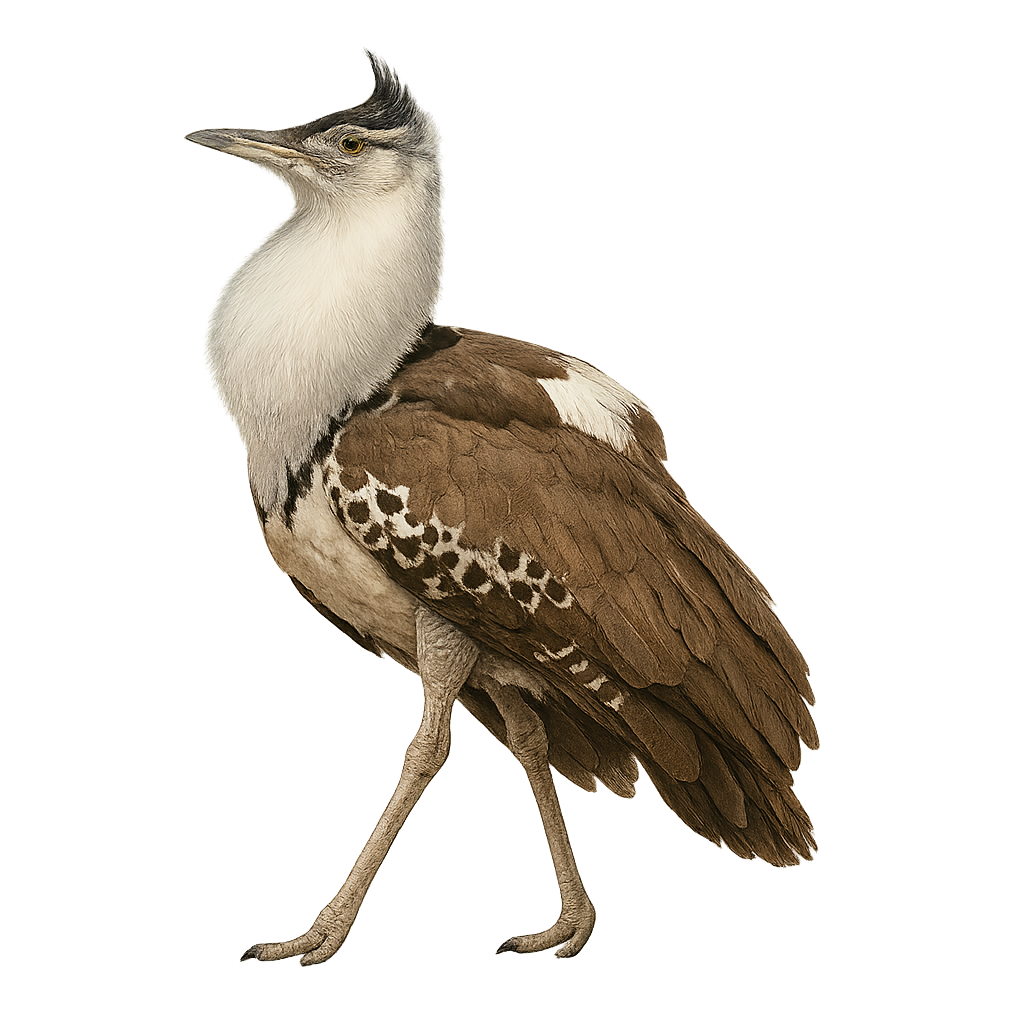Your wildlife photography guide.
Explore the kori bustard in detail, study its behavior, prepare your shots.
Where to observe and photograph the kori bustard in the wild
Learn where and when to spot the kori bustard in the wild, how to identify the species based on distinctive features, and what natural environments it inhabits. The WildlifePhotographer app offers tailored photography tips that reflect the kori bustard’s behavior, helping you capture better wildlife images. Explore the full species profile for key information including description, habitat, active periods, and approach techniques.
Kori Bustard
Scientific name: Ardeotis kori

IUCN Status: Least Concern
Family: OTIDIDAE
Group: Birds
Sensitivity to human approach: Suspicious
Minimum approach distance: 30 m
Courtship display: December to March
Incubation: 23-30 jours
Hatchings: December to April
Habitat:
Savannas, dry grasslands, semi-deserts
Activity period :
Primarily active during the day, with peak activity in the morning and late afternoon.
Identification and description:
The kori bustard is one of the largest flying birds in Africa, with predominantly gray-brown plumage and distinctive black and white patterns on its wings. It primarily inhabits savannas and dry grasslands, feeding on insects, small vertebrates, and seeds. Males are significantly larger than females, weighing up to 20 kg. During the breeding season, males perform impressive displays to attract females. Although capable of flight, the kori bustard prefers walking and running. It is often solitary or found in small groups. Its population is declining due to hunting and habitat loss, but it remains relatively widespread in some areas.
Recommended lens:
400 mm – adjust based on distance, desired framing (portrait or habitat), and approach conditions.
Photography tips:
To photograph the kori bustard, it is advisable to use a telephoto lens of at least 400mm to capture details without disturbing the bird. Approach slowly and discreetly, using surrounding vegetation for camouflage. The best times for photography are early morning or late afternoon when the light is soft, and the bird is active. Be patient and ready to wait to get natural and interesting shots.
The WildlifePhotographer App is coming soon!
Be the first to explore the best nature spots, track rutting seasons, log your observations, and observe more wildlife.
Already 1 430 wildlife lovers subscribed worldwide

